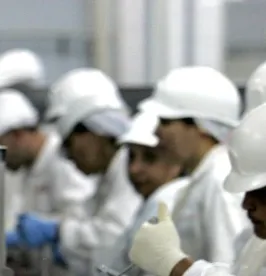On April 26, 2020, the US Centers for Disease Control and Prevention (CDC) and the US Occupational Safety and Health Administration (OSHA) issued interim guidance for the US meat and poultry industry. The guidance contains a number of recommendations aimed at stemming transmission among workers in this particularly vulnerable industry, which continues to face plant shutdowns over COVID-19 outbreaks. Although aimed at this critical industry specifically, the structured guidance also contains useful direction to other industries working under parallel conditions—namely close contact between workers and/or workers and the public.
Under critical infrastructure guidance, meat and poultry facility workers are permitted to continue work following potential exposure to COVID-19, provided they remain asymptomatic and additional measures are implemented to protect the workers and the community. Accordingly, the industry is directed to work directly with appropriate state and local public health agencies and occupational safety and health professionals; incorporate relevant aspects of the CDC guidance; and incorporate guidance from other authoritative sources or regulatory bodies as needed. The recent CDC/OSHA guidance clarifies that it supplements, and does not replace, prior general guidance issued by OSHA and the CDC here and here.
Distinctive factors affecting meat and poultry industry workers specifically addressed in the guidance include:
- Distance between workers – meat and poultry processing workers often work close to one another on processing lines, and may also be near one another at other times, such as when clocking in or out, during breaks, or in locker/changing rooms.
- Duration of contact – meat and poultry processing workers often have prolonged closeness to coworkers (e.g., for 10-12 hours per shift), which increases the risk of SARS-CoV-2 transmission.
- Type of contact – meat and poultry processing workers may be exposed to the infectious virus through respiratory droplets in the air – for example, when workers in the plant who have the virus cough or sneeze – or through contact with contaminated surfaces or objects, such as tools, workstations, or break room tables.
- Shared transportation – there is a common practice at some workplaces of sharing transportation such as ride-share vans or shuttle vehicles, car-pools, and public transportation.
- Community contact – there may be frequent contact with fellow workers in community settings in areas where there is ongoing community transmission.
To address these particular risk factors, the CDC and OSHA specify that employers in this industry must create COVID-19 assessment and control plans that are applicable to anyone entering or working in the plant. This includes assigning a qualified workplace coordinator for the plan, informing all workers in the facility how to contact the identified coordinator with any COVID-19 concerns, and ensuring the plan is consistent with all state, local, and agency guidance. It also should be updated frequently to assure worksites are getting all relevant and up-to-date information concerning COVID-19.
To this end, the guidance sets forth extensive detailed control and safety measures that mirror the CDC’s and OSHA’s prior COVID-19 guidance, namely to conduct hazard assessments, implement infectious disease and preparedness and response plans, and utilize the appropriate hierarchy of controls to address COVID-19 hazards in all workplaces. As critical industries continue to operate, and as more and more operations begin to return employees to work, employers should follow this guidance closely. It was developed for one of the most vulnerable industries, and can thus assist many others in similar circumstances navigate this monumental challenge.




 />i
/>i

